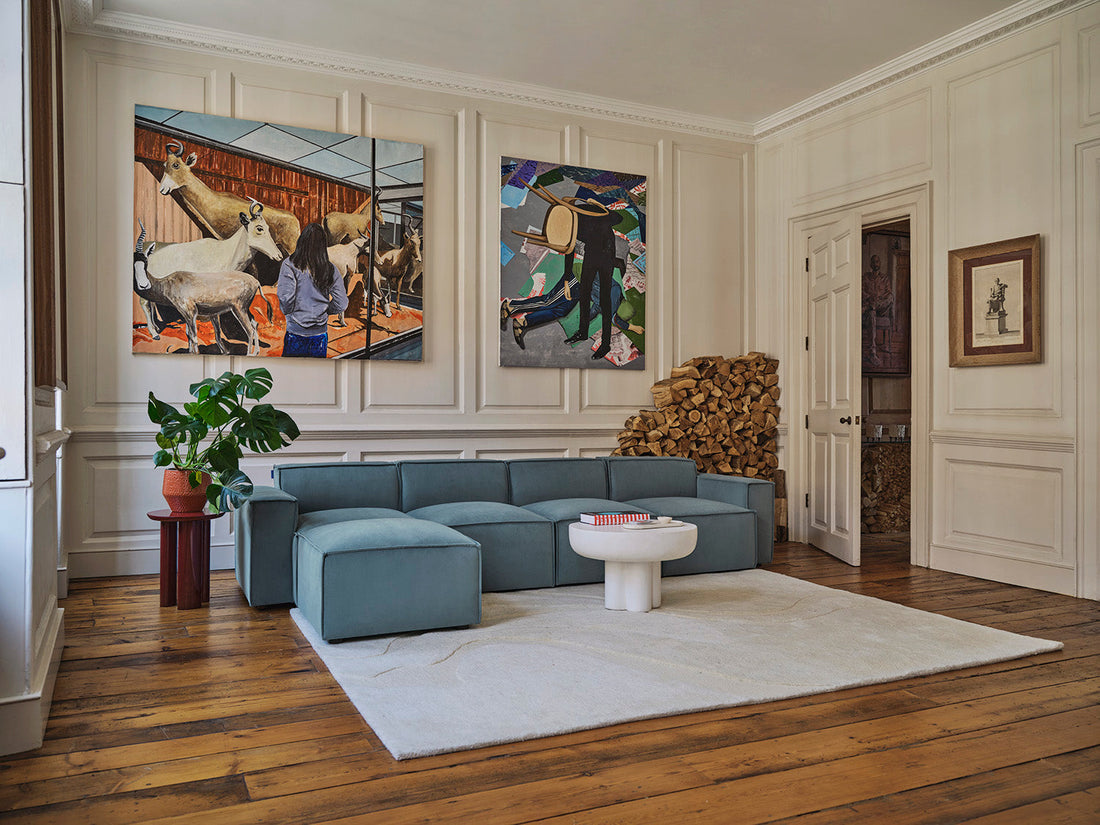6 Blue Colour Palettes for Your Living Room

6 Blue Colour Palettes for Your Living Room
From serene pastel shades to rich navy tones, blue can set the mood for your living room. Whether you’re inspired by modern minimalism, classic styles or the coastal grandmother aesthetic, there’s a blue out there to fit your vibe.
Try these blue colour palettes for your living room makeover.

Pale Blue as a Neutral
Want a neutral colour palette that’s not all beige? Pale blue is the answer.
Pale blue is often referred to as a "pseudo-neutral" because, while it’s technically a colour, its soft and understated tone allows it to behave like a neutral in interior design.
It works harmoniously with other neutrals, such as white, cream, taupe and grey, and provides a gentle transition between different elements in the room. So, if you want to break an all-neutral palette without creating too much contrast, pale blue is a great option for your living room.

Navy Blue on a Backdrop
A navy blue sofa can be a great statement piece in your home. And by pairing it with a subtle, muted colour palette, you make it the focal point of your living room.
The idea is to colour drench your room in one or two similar tones. That could be all neutrals, soft greens, or even reds, if you wanted a more striking contrast.
The rich, saturated blue of the sofa breaks up the palette—adding a touch of drama that’s bold, yet sophisticated.

Teal Blue and Mustard
Teal and mustard yellow create a harmonious balance of warm and cool. Both classic colours in their own right, teal adds depth and elegance, where mustard yellow brings a sunny, cheerful mood.
Even though it’s a bold combination, you’d be surprised by how easily it pairs with other materials and textures, such as natural wood flooring and mid-century modern furniture. Undeniably, it has a cool, retro vibe—which is perfect for the ‘70s trend we’ve been seeing lately. Layer with accessories in retro tones like moss green or tan for fun visual contrast.

Pale Blue and Rust
For a lighter contrast, try combining powdery pale blues with the warmth and richness of rust.
Pale blue sits in the “serene hues” category—it makes your space feel calm and soothing. On the other hand, rust is a warm, earthy tone that adds energy and depth. When paired together, the coolness of pale blue prevents rust from feeling too heavy, while rust prevents the pale blue from feeling too cold.
What we love about this palette is how it can be adjusted to suit different styles (e.g. modern, bohemian, coastal, rustic) just by dialing up the intensity of either colour.

Biophilic Blue
The biophilic trend is all about bringing nature inside. And darker blues like teal, or indigo—which take inspiration from moody waters or the night sky—can be an interesting addition to the brown, earthy tones often associated with biophilic design.
Teal has that mix of both blue and green, which complements dark green foliage well, if you have indoor plants in your living room. Where indigo blue works beautifully with the natural materials and textures often used in biophilic interiors, such as wood, stone, rattan, and jute.

Art Gallery Airforce Blue
Airforce blue adds depth to a space, which helps colourful paintings stand out. Its muted tone contrasts nicely with bright or bold artwork, making the colours appear more vivid and dynamic. That’s why we’ve lovingly referred it here as “art gallery airforce blue”
Airforce blue also has a classic and timeless appeal, which works well with both contemporary and traditional artwork.
You can either paint it on your walls, or go for an airforce blue sofa. Whatever way, airforce blue will act as a balanced, elegant backdrop for more colourful art pieces.
Feeling inspired? Browse our range of blue sofas.
Share
Tags
- colour palettes
- Living Room Ideas
- translated-DE





